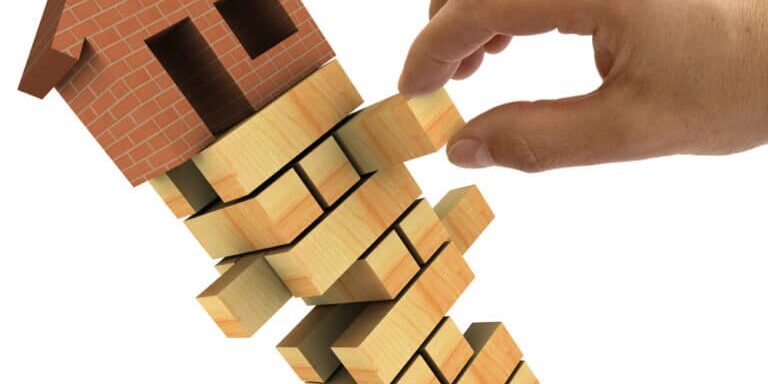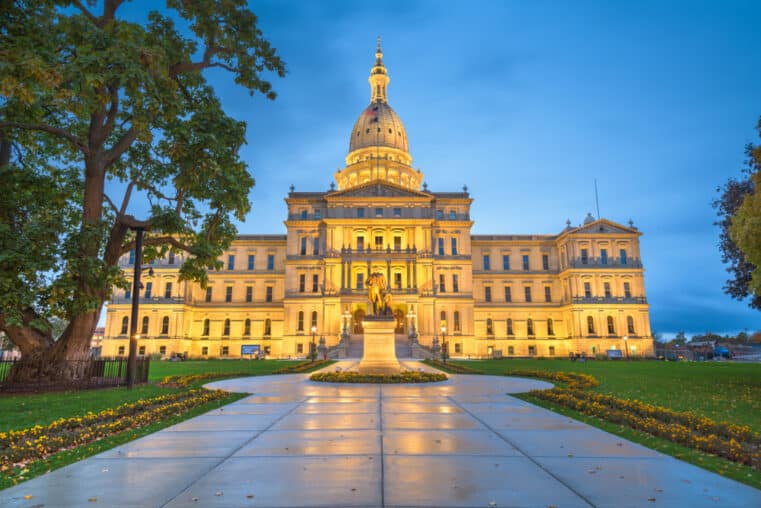
The Great Delisting: How the Fed Killed the American Dream and Froze the Housing Market
Artis Shepherd at Mises Wire just dropped a sharp diagnosis of America’s frozen housing market—a market where prices remain stuck at nosebleed levels, buyers are tapped out, and sellers are treating low offers like personal insults. But the story, while well-told by Shepherd, runs deeper. What we’re witnessing isn’t just a pricing mismatch or market friction.
This is the endgame of 15 years of monetary malpractice—a distorted, bifurcated, and deeply broken market where price discovery has been destroyed by central bank intervention. And housing, the bedrock of the American dream, has now become a luxury good for the asset-holding class and a cruel joke for everyone else.
Let’s unpack how we got here—and what comes next.
The Market Won’t Clear Because the Fed Won’t Let It
For years, the real estate market operated under a perverse illusion: homes weren’t rising in value because they were better or scarcer—they were rising because the dollar was becoming worth less. Artificially suppressed interest rates and endless money creation pushed asset prices into orbit, turning homes into speculative vehicles instead of places to live.
Now that rates have risen—and I say nominally risen, since real rates remain negative in many respects—buyers are hitting a wall. They can’t afford the monthly payments. But sellers? They’re still basking in the afterglow of the ZIRP era, holding onto 3% mortgages and equity windfalls. So what do they do when they get a "lowball" offer?
They pull the listing.
Realtor.com shows delistings up 47% year-over-year in May. That’s not a trickle. That’s a sign of total breakdown in market function. Sellers aren’t desperate. They’re entitled. They’ve been trained by a decade of Fed-fueled bubble economics to believe that any price decline is temporary, and that Jerome Powell will ride in with more liquidity if things ever get dicey.
And they’re probably right.
This Is What Happens When You Weaponize the Interest Rate
Let’s not pretend this market behavior is organic. It’s not. It’s the product of 15 years of financial distortion that began in the rubble of 2008 and metastasized into full-blown monetary insanity by 2020.
Zero interest rate policy (ZIRP) was never a “stimulus.” It was a surrender—a total capitulation to Wall Street and Washington’s insatiable need for cheap debt. And like all cheap money policies, it created winners and losers, rigging the game in favor of those already sitting on hard assets.
While the asset-owning class watched their net worth skyrocket through home appreciation, equity markets, and low borrowing costs, the average saver was annihilated. People parking cash in CDs or money markets saw their purchasing power decay year after year. Real wages stagnated while living costs soared. If you didn’t own assets, you were left behind—and now, you’re being told that you can’t afford to participate.
The New Housing Class Divide
Shepherd nails it when he observes that the market has become a game of musical chairs where only the old and wealthy still have a seat. But this isn’t just a generational divide—it’s a structural shift toward financial feudalism, where homeownership is increasingly reserved for those already inside the castle walls.
The average age of first-time homebuyers has climbed to 38, while the average age of all buyers now sits at an all-time high of 56. That’s not progress. That’s collapse. A generation that should be planting roots, raising families, and building wealth is instead renting overpriced apartments, juggling gig work, and wondering whether they’ll ever own a home.
What used to be a rite of passage is now a gated experience for the financially privileged. Rising home prices and mortgage rates mean fewer families, delayed childbirth, and a population of adults stuck in a permanent adolescence—not by choice, but by policy.
This isn’t just bad economics. It’s civilizational decay.
The American Dream: Sacrificed on the Altar of Monetary Inflation
Let’s speak plainly: Monetary policy destroyed the housing market.
For over a decade, the Fed was the arsonist in a three-piece suit, pouring trillions of dollars into the economy, then blaming supply chains or immigration or “animal spirits” when prices exploded. The Fed didn’t just distort interest rates—it corrupted the most essential economic signals in our system.
And the result? A housing market that no longer functions. Homes aren’t priced based on income fundamentals, but based on access to artificially cheap credit. Sellers refuse to acknowledge that the market has shifted. Buyers, squeezed by inflation and higher rates, are unable to bridge the gap. So listings get pulled, prices remain high, and transaction volume collapses.
We’re told this is a “pause.” It’s not. It’s paralysis.
The Fed’s Legacy: Inflation, Inequality, and Generational Theft
The housing crisis isn’t an isolated incident. It’s a symptom of a broader rot—the rot of central planning dressed up as economic stewardship. The Federal Reserve, in concert with Washington, has created a system that rewards speculation, punishes thrift, and suffocates mobility.
This is a system where a retiree with three paid-off properties and a portfolio full of inflated assets can still tap home equity at low rates, while a young couple with decent income and no debt can’t even qualify for a starter home. This is a system where savings are devalued, wages are eroded, and entire generations are locked out of the very markets they were promised access to.
And it’s all powered by the printing press.
What Comes Next? More Rigging, More Rot
The delisting wave is just the opening act. Without a real correction in prices, or a reset in rates, the housing market will remain frozen. Sellers will sit. Buyers will wait. And in the meantime, Wall Street will swoop in, scoop up distressed inventory, and turn America into a nation of renters.
If Powell pivots, we’ll get another surge in asset inflation—benefiting the same insiders who profited from the last round. If he doesn’t, eventually, sellers will break. Price cuts will accelerate. Defaults may rise. Equity will evaporate. Either way, the illusion of stability is already cracking.
Don’t expect a “soft landing.” That ship has sailed.
It's Time to Stop Playing by Their Rules
If you're still waiting for the system to fix itself, you’re going to be waiting a long time. This isn’t a temporary glitch. This is what happens when a society replaces sound money with debt, responsibility with bailouts, and honest pricing with central planning.
The best way to win a rigged game is not to play. Opt out.
Start moving your wealth into real assets. Tangible, durable, non-fiat-linked assets. Don’t assume affordability will return just because it always has. The old rules are gone. Don’t trust the banks to protect your savings—especially when they're sitting on unrealized bond losses and bad mortgage exposure.
Begin preparing now.
Bill Brocius’ 7 Steps to Protect Your Account from Bank Failure is a smart first step. It’s free, and it’s loaded with strategies for insulating yourself from the next financial shock.
👉 Download it here
For those who want serious, ongoing insight—not the Wall Street echo chamber—join Bill’s Inner Circle Newsletter for $19.95/month. It’s blunt, precise, and months ahead of the mainstream.
And if you still think the banking system is salvageable, read End of Banking As You Know It. It’s the book Washington hopes you never pick up.
This housing crisis isn’t a hiccup. It’s a controlled demolition of the American Dream, engineered by central banks and paid for by the working class.
Don’t go down with it. Get out while you can.
— Eric Blair, for Dedollarize News











